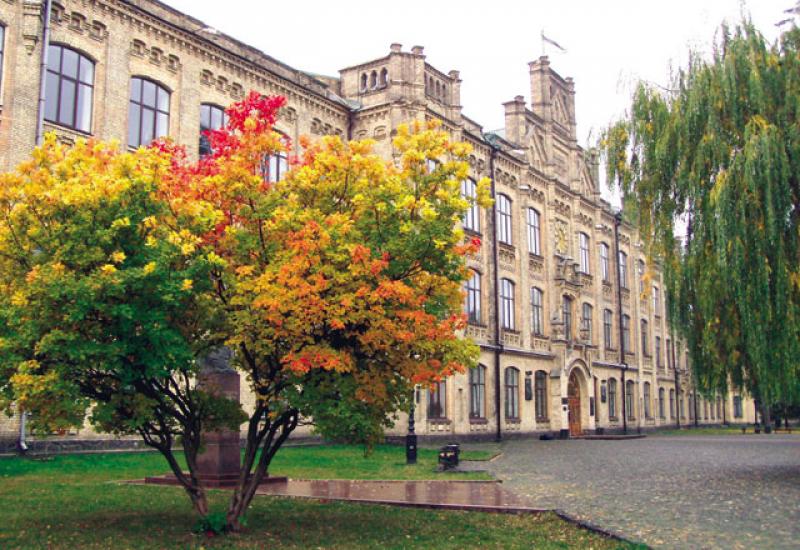Neither the color does not affect a person so as red. Irresistible, exciting, full of the joys of life – it is all about red. There are about 105 shades of "color of passion." No one else has such a large number of shades. Add a little blue, and you will get a cool tone, a little yellow - the color and nature of it changes, it becomes warm. When red is mixed with green, it appears brownish tint, which also creates a warm impression.
The red-yellow-green riot of colors could be seen on the lawn in front of the first building, where two incredible beauty trees did not leave indifferent passers-by throughout the autumn. The number of pictures taken here by professionals and amateurs, can not be counted, even wedding procession began to visit the place. What is this strange trees? This is sumac usual, paradise tree, sumac (Cotinus coggygria Scop.). Local names – zheltusnik, parik tree.

Sumac
Sumac - a plant for our territory is quite exotic. It often can be found on the Black Sea coast or in the Crimea. It likes the light, grows in open, well-lit, dry, rocky, limestone and chalk slopes. The tree is resistant to urban air pollution. It lives up to 80-100 years, was domesticated in the Crimea, no later than 1650. Sumac has three official names: common sumac, sumac koggiriya and sumah to draw.
Witch
It is impossible to look away from sumah on summer, when it looks like a smoky-pink clouds, or in autumn, when its crown turns into a firework of colors and shades, from pale yellow to deep orange, pink to purple, sometimes purple or lilac. There are decorative forms with weeping branches and purple leaves.
Although its flowers are small and inconspicuous, the panicles look like an openwork lace. During the fruiting stalks elongate and cover with long reddish or whitish hairs, causing it become fluffy and very beautiful, unlike anything else. From a distance, it seems as if the tree has become a bluish-pink clouds. Association with lush powdered wigs ladies of the eighteenth century is so strongt that the plant is given another name - Parik tree. In English-speaking countries sumac is called "steaming (smoky) bush" (Smoke Bush). The sumac called venetian because in Russia the plant came from Italy. And in Ukraine, it is called poetically - a paradise tree.
Of all trades
Even in ancient times, the healing and coloring properties of the smoke tree were highly valued. It is obtained from smoke tree a dye for dyeing wool, silk, wood and leather in yellow, brown and orange, leaves give the black color, roots - the red paint. Its wood, which is hard enough and at the same time light, of greenish-yellowish color is used in a small carpentry and souvenir products, manufacture of musical instruments. Sumac has hytoncidal and insecticidal properties. Honey plant. It flowers in June. One flower allocates 0.096 mg of sugar of the nectar, and 1 ha of plantations - 36-40 kg.
A candidate for the medicine chest
Presence in the sumah leaves of tannins gives the tree medicinal properties. Their percentage is: in leaves from 10.8 to 27.9% and in the cortex - 3,1-9,5%.Tannin has astringent, anti-inflammatory and antiseptic effect. Tannin of smoke tree is used, moreover, in the coloring, the textile industry, the wine industry. Flowers and leaves contain essential oils (0,1-0,21%) which is used in perfumery.
At home herbal tincture of leaves is used externally for burns, ulcers, bedsores, to rinse for inflammation of the mouth and throat, bath with sweating feet. Internally, tincture used in food poisoning, poisoning with heavy metal salts, alkaloids. Raw materials harvested in July and August. It is necessary to collect on a few leaves on each branch, without exposing them to more than 1/3, or severe winter the shoots will die.
Therefore, at any time, strolling through the park, learn and have fun with the amazing plants planted here by our predecessors and educated contemporaries.

